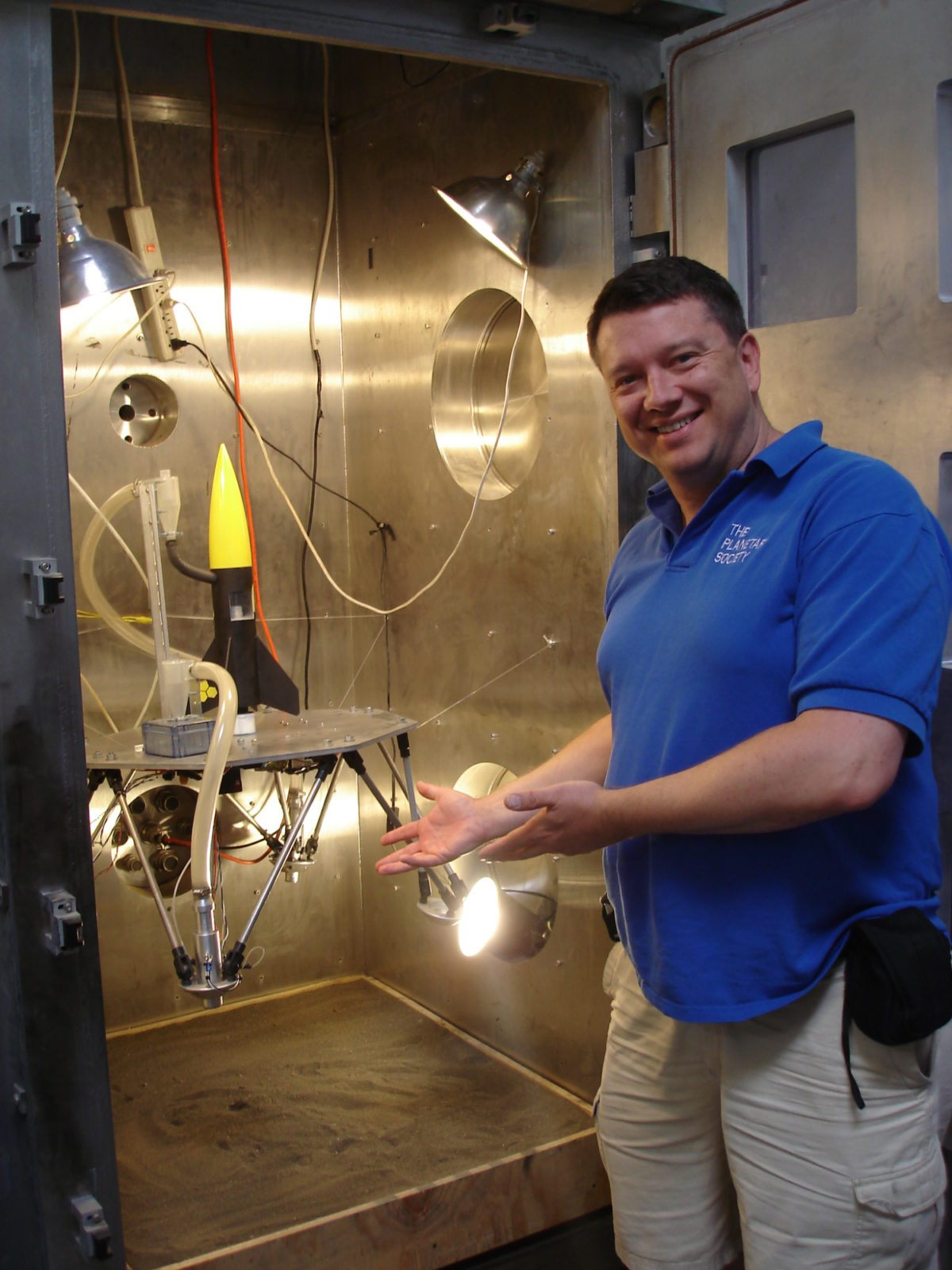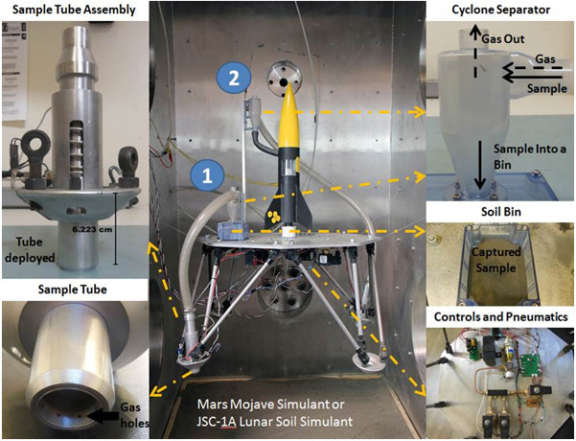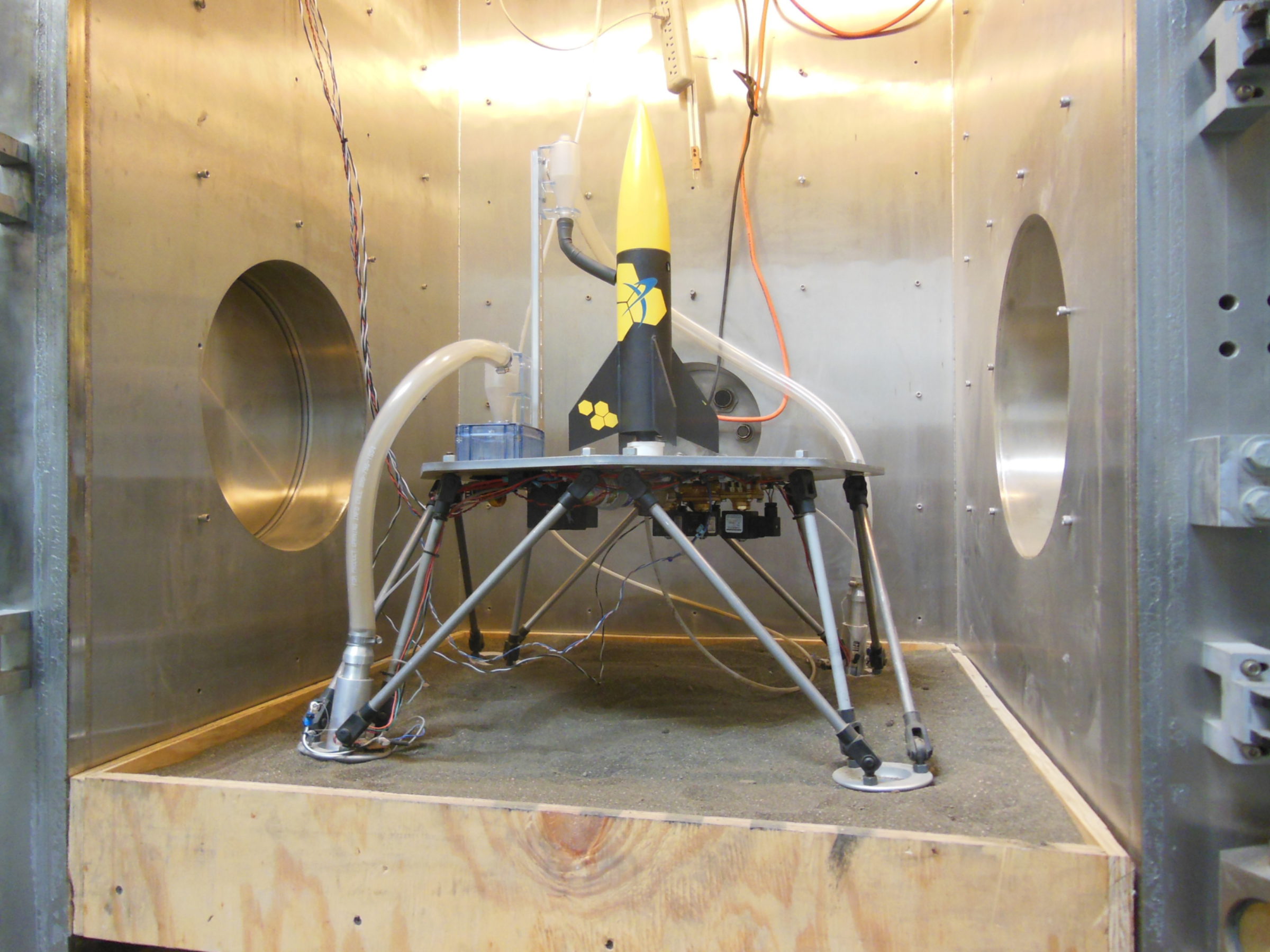Bruce Betts • Dec 04, 2013
Planetary Dirt Sampling Success
Thanks to Planetary Society members and donors, Honeybee Robotics has designed, constructed, and tested in a vacuum chamber a full PlanetVac system for the first time. I am happy to report to you their success, including presenting a video about the PlanetVac system that shows the tests themselves. I visited Honeybee for one of the tests and it was very impressive. But, why are we interested in a new sampling system?

One of the hardest things to do in planetary exploration, but one of the most valuable, is to sample a planetary surface – gather planetary dirt – and then transfer that dirt to a science instrument or sample return capsule. Current ways to do that, such as robotic arms, are costly and complex with lots of moving parts. Wouldn’t it be nice to have other options as well that could be used depending on the situation?
PlanetVac, which stands for Planetary Vacuum, is a concept that effectively vacuums up planetary regolith (the dirt overlying bedrock) for quick and reliable surface sampling. In practice it actually blows materials up tubes using compressed gas, which by the way, is usually available on landers already because it is used to pressurize the fuel tanks. The PlanetVac sampling devices would be built into the lander legs themselves. This technique can conceptually be used to feed surface dirt to science instruments and/or feed it into sample return rockets on landers on Mars, asteroids, or the Moon. Because of the low pressures on all those bodies, the technique is extremely efficient because the efficiency is related to the ratio of the pressure of the gas you are using to the ambient pressure.
Honeybee Robotics had tested single components of the system and found it to be extremely efficient. But, would a full system work as predicted on simulated planetary surface materials, for both Mars and the Moon, in a vacuum chamber? To find out, the Honeybee team, composed of professional engineers, college students, and a high school intern, designed and built a full PlanetVac prototype system as well as a simplified small lander on which to install it.
The team suspended the whole set up in their large phone-booth sized vacuum chamber, pumped it down to low pressures, for example to Mars surface pressures, then dropped the lander onto Martian or lunar simulant (Earth dirt chosen for its similar properties to regolith on Mars or the Moon). The system included specially designed lander foot pads that included a hollow tube that led up the lander legs.

After landing, interior tubes were deployed a few centimeters deeper into the soil to increase efficiency. A nice fall back is that the system still works even if the interior tube fails to deploy. Compressed gas running down a lander leg was used to force the Mars or lunar simulant up the interior sampling tube. One lander leg deposited dirt into a simulated science instrument (a clear box viewed by a camera to watch the process). Another deposited dirt into a simulated ascent vehicle, a rather playful compressed gas powered rocket (not an accurate simulation) that launched at the end of the process.
The tests were very successful, demonstrating the effectiveness of a PlanetVac system for quickly and reliably sampling planetary surface materials. Also, much was learned in the process as designs were created and refined and further lessons learned on how to improve future designs. Honeybee is now in the process of writing up the details of the system and the tests and what was learned. They will publish the results in professional journals and present them at engineering and science conferences.

Thanks for making this new prototype planetary sampling technique happen! Enjoy this video that documents the system, and shows video from the tests:
PlanetVac: Planetary Surface Sampling Vacuum Chamber Demonstration Honeybee Robotics' PlanetVac, made possible by The Planetary Society, is a new way of doing one of the hardest yet most valuable things in planetary exploration: sampling a planetary surface -- gathering planetary dirt -- and then transferring that dirt to a science instrument or sample return capsule. This video documents the first test of a complete prototype PlanetVac system, done in a vacuum chamber at Mars-like pressures. PlanetVac, which stands for Planetary Vacuum, is a concept that effectively vacuums up planetary regolith (the dirt overlying bedrock) for quick and reliable surface sampling.
Support our core enterprises
Your support powers our mission to explore worlds, find life, and defend Earth. You make all the difference when you make a gift. Give today!
Donate

 Explore Worlds
Explore Worlds Find Life
Find Life Defend Earth
Defend Earth

